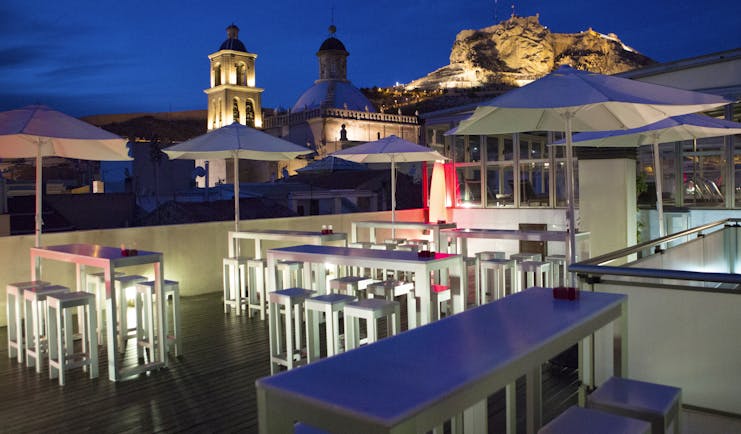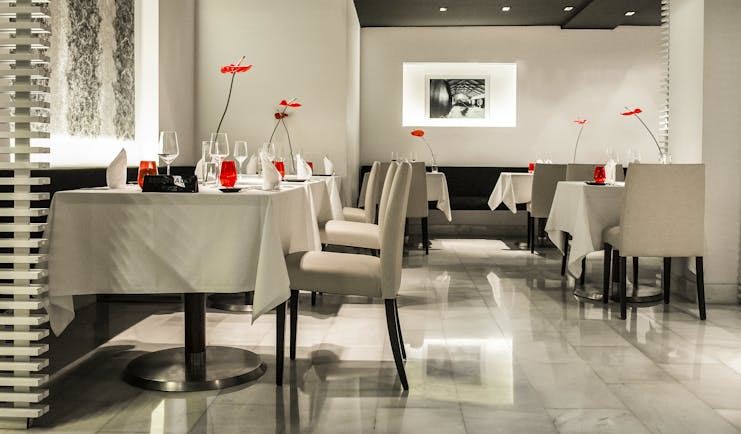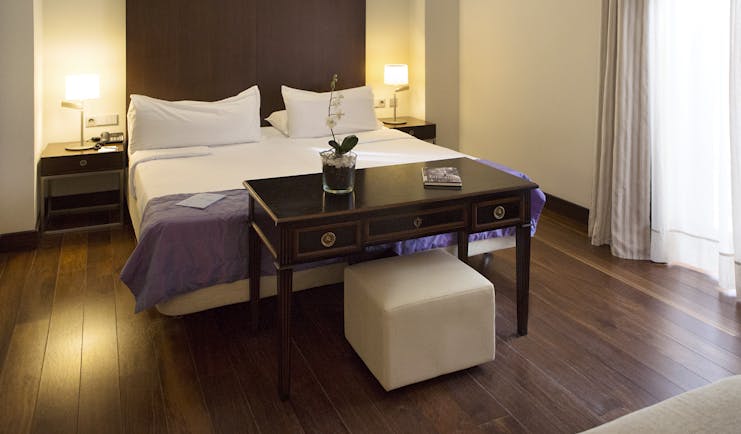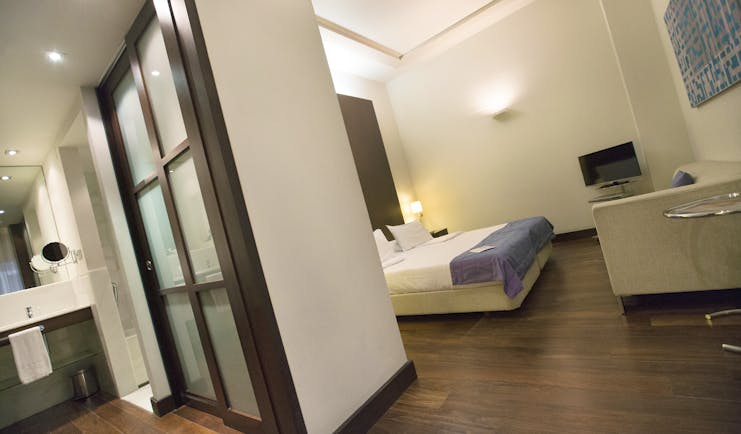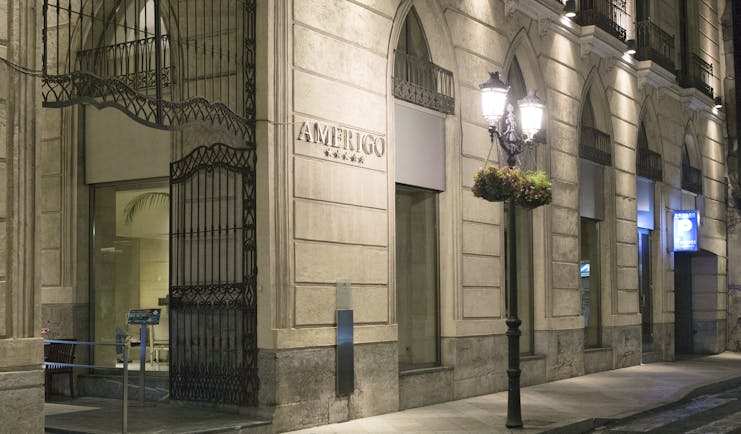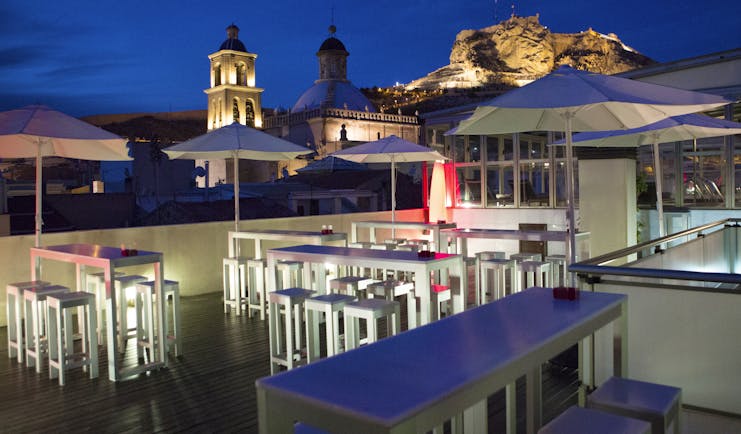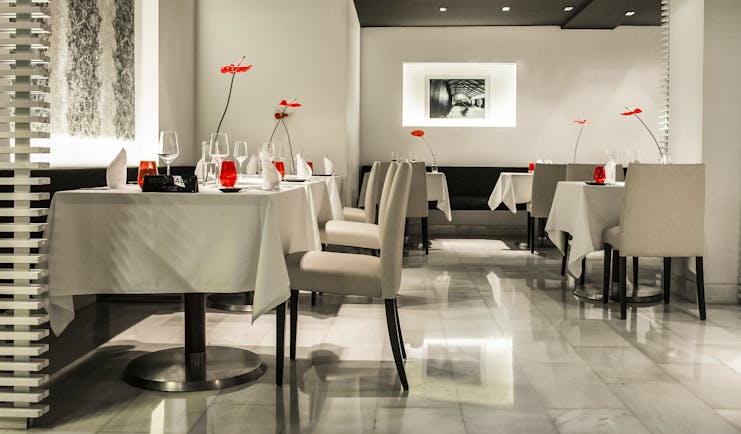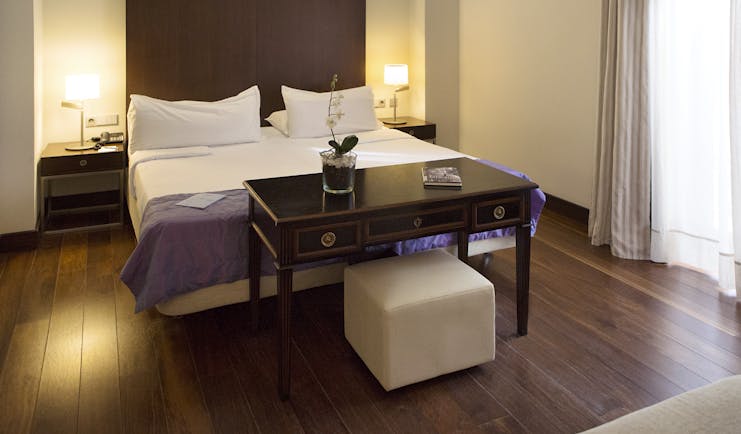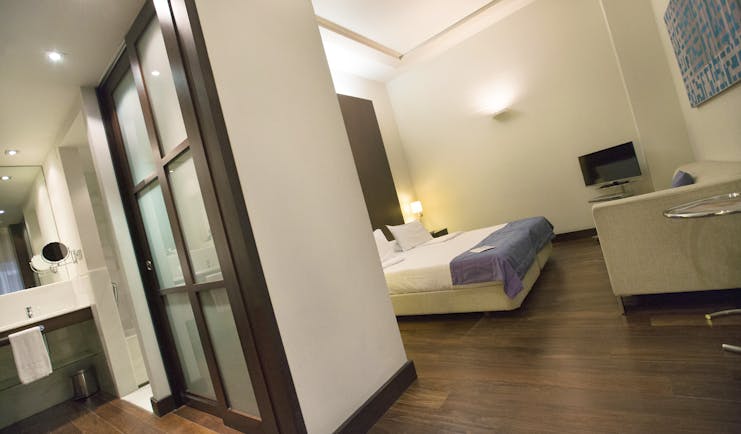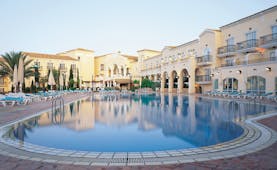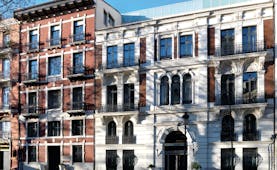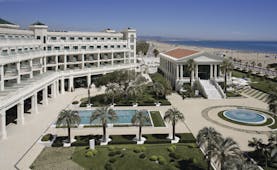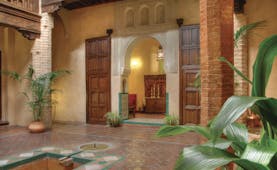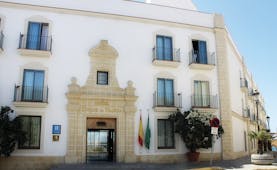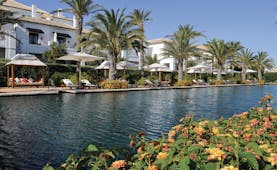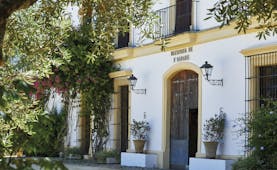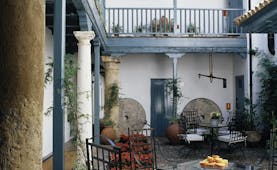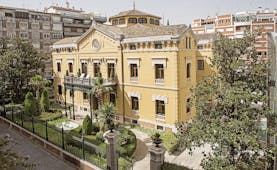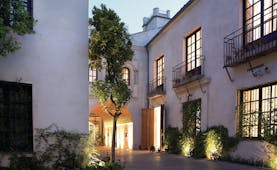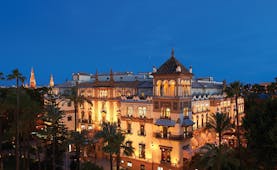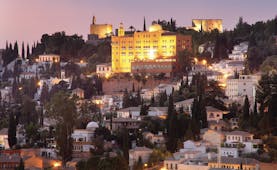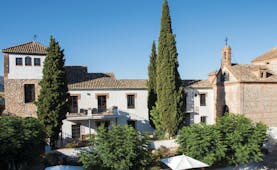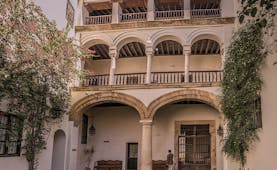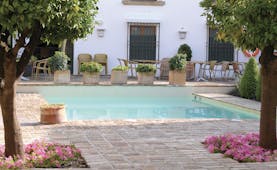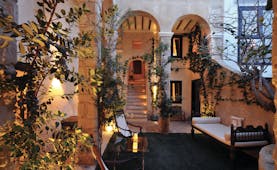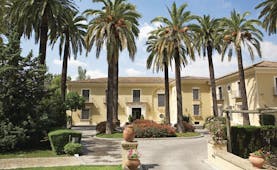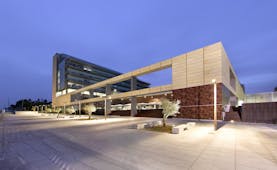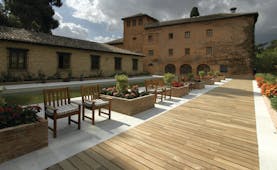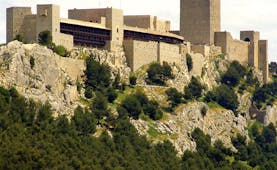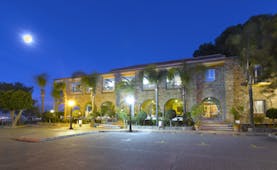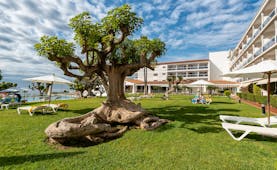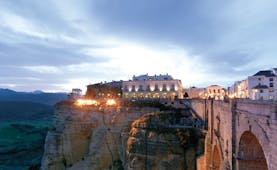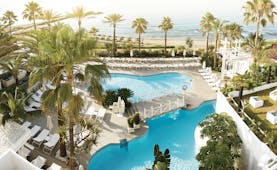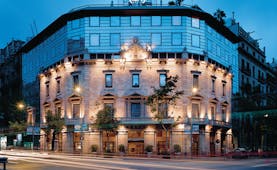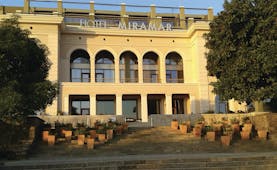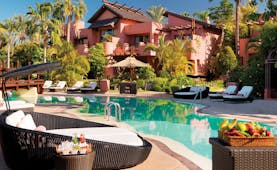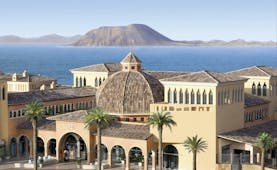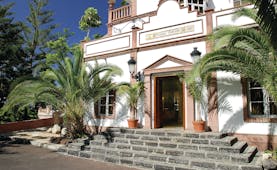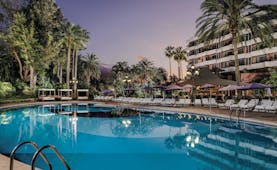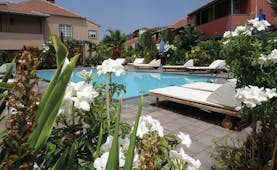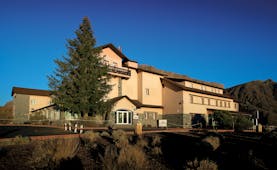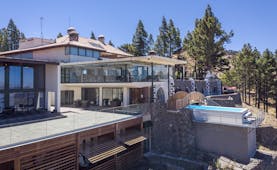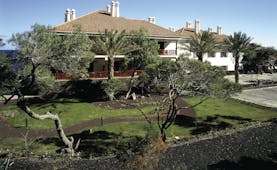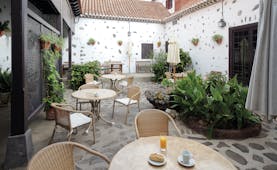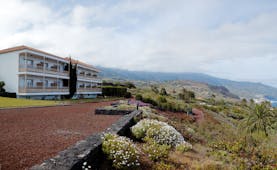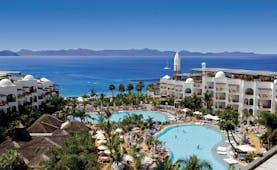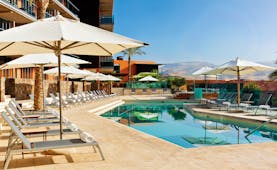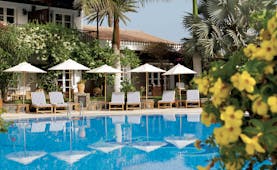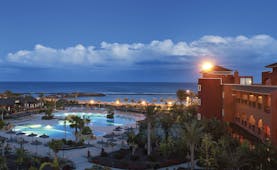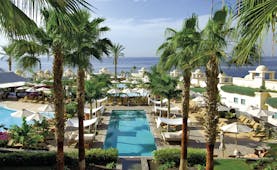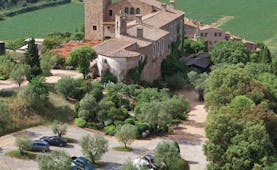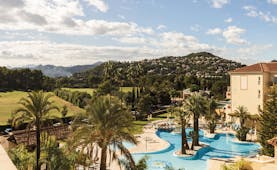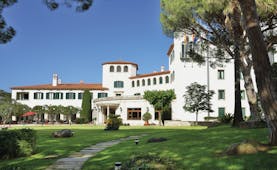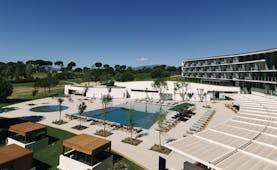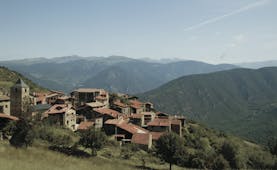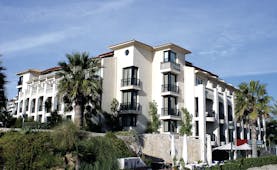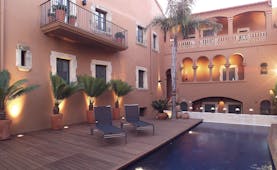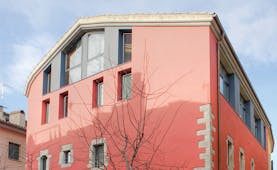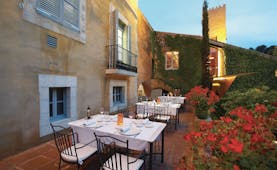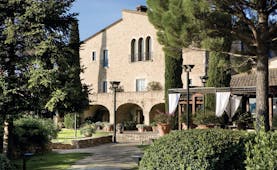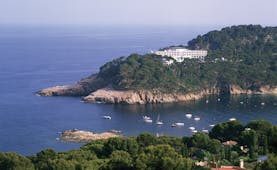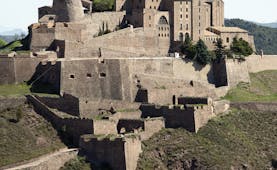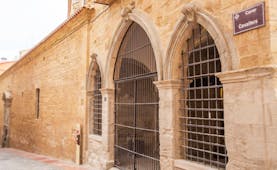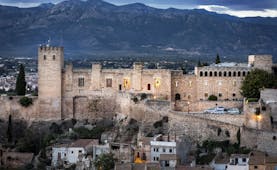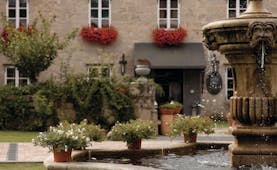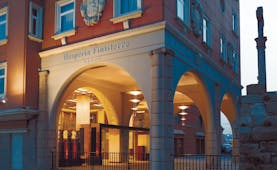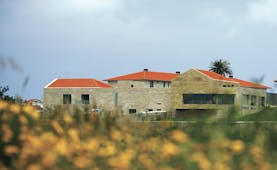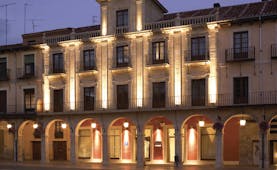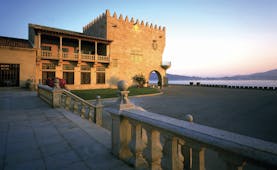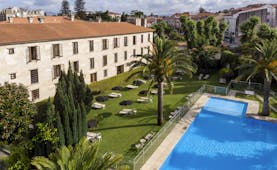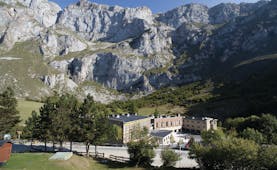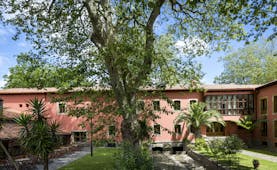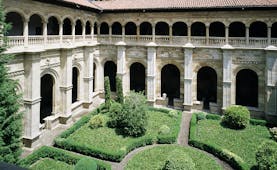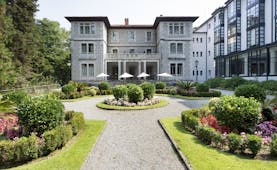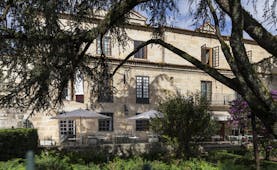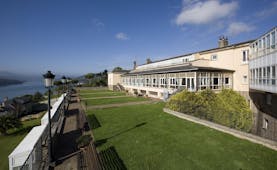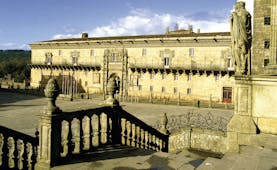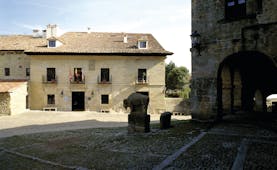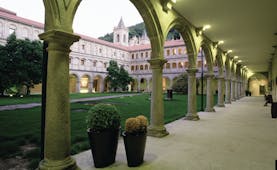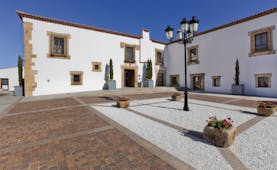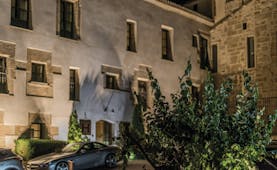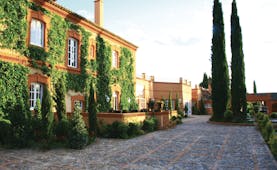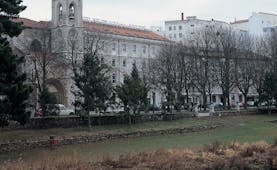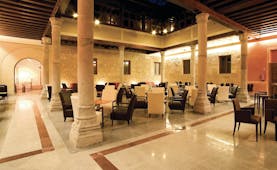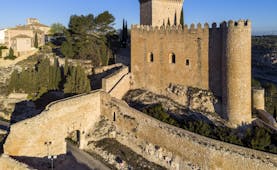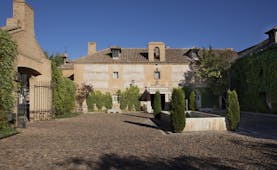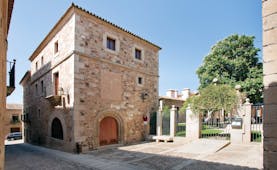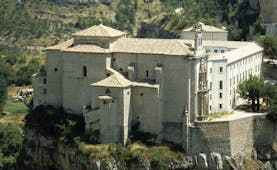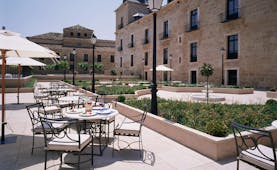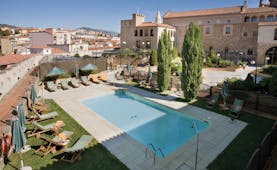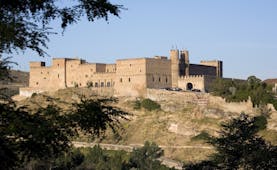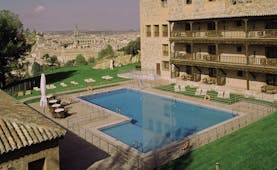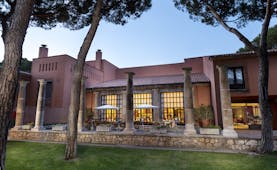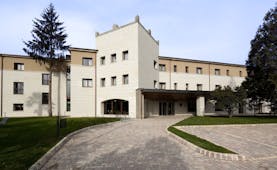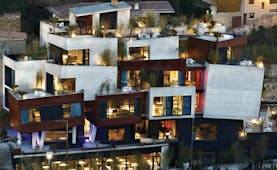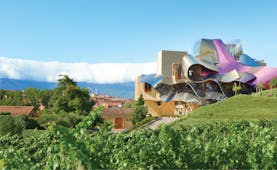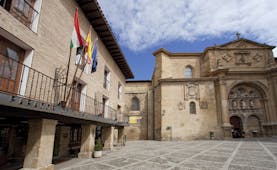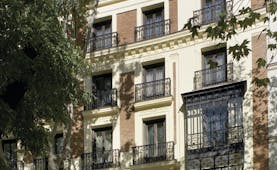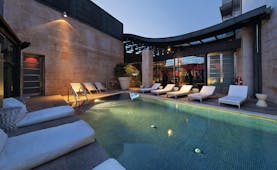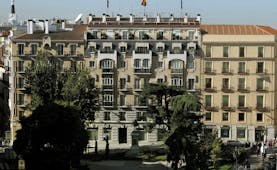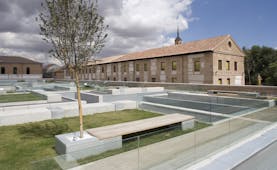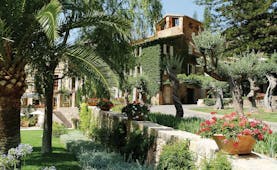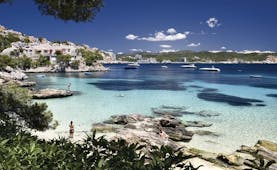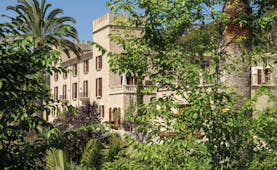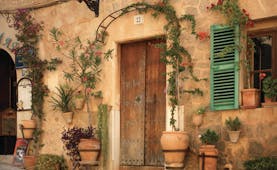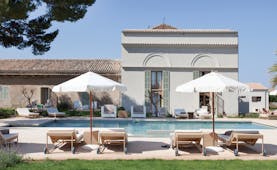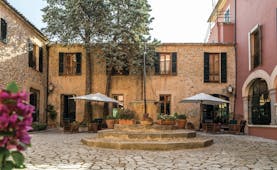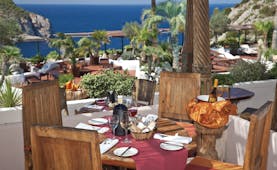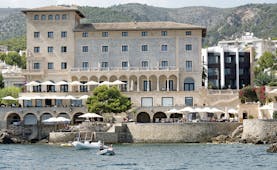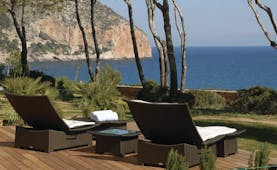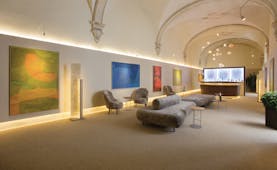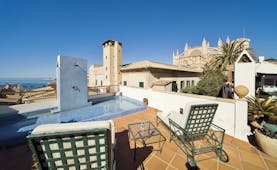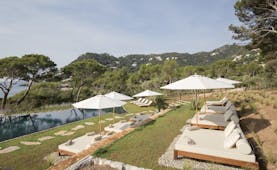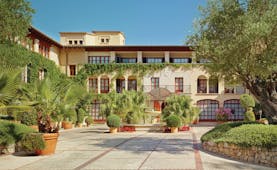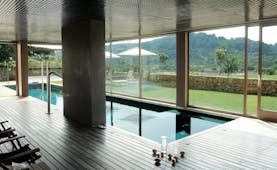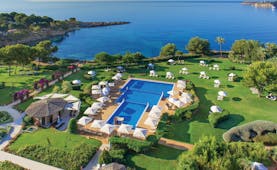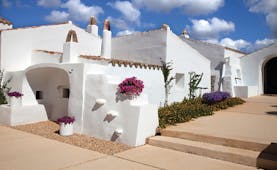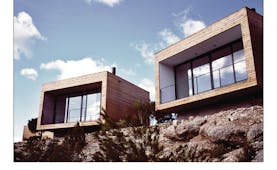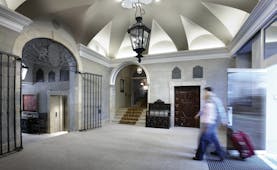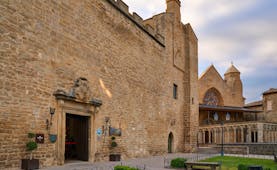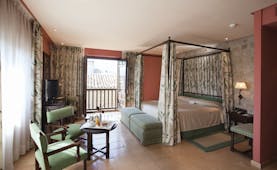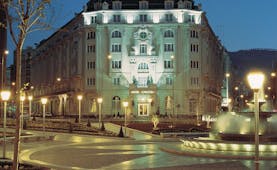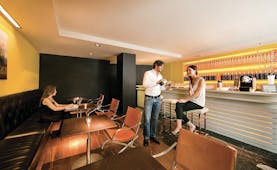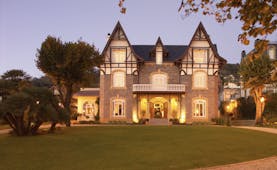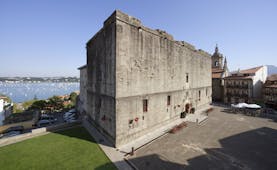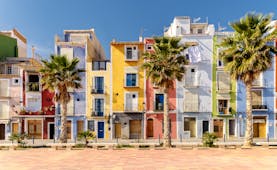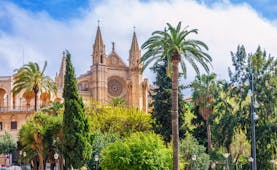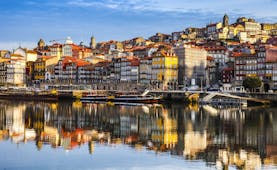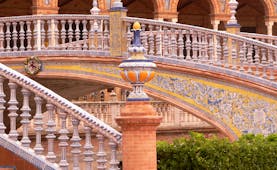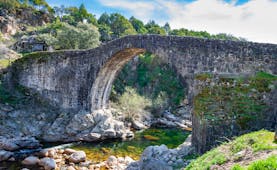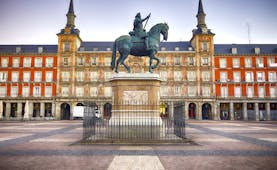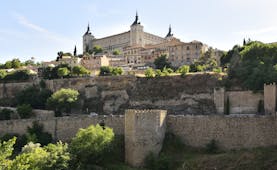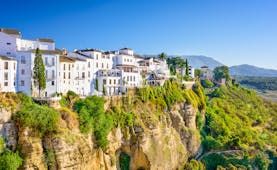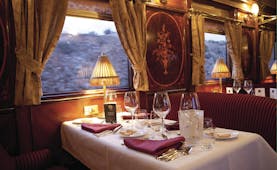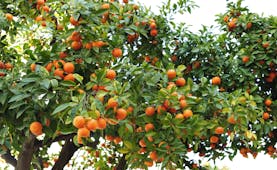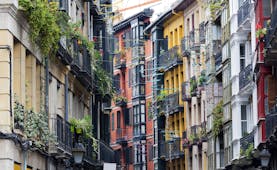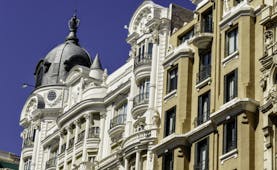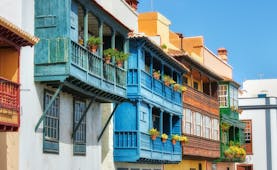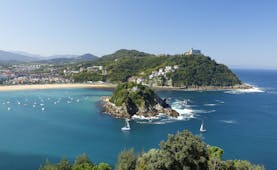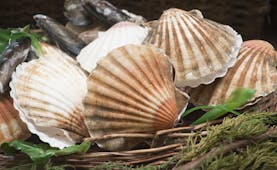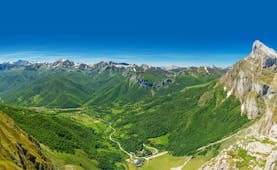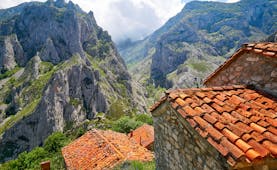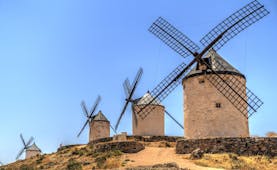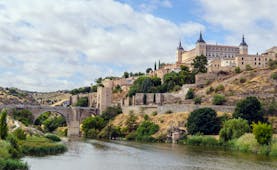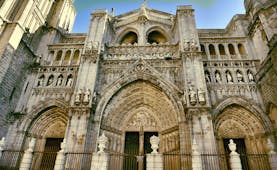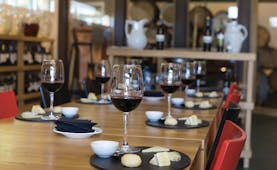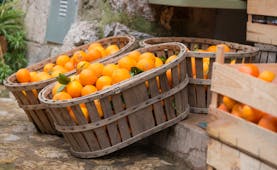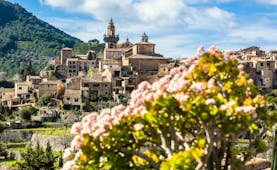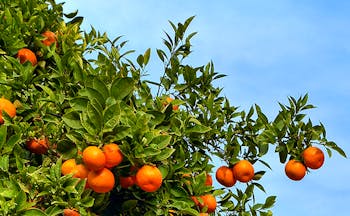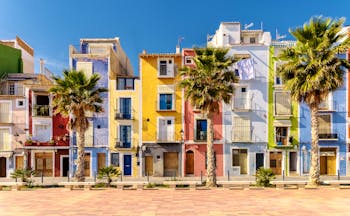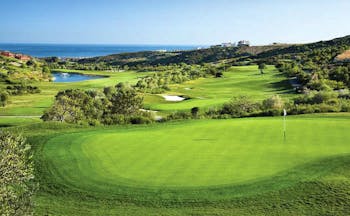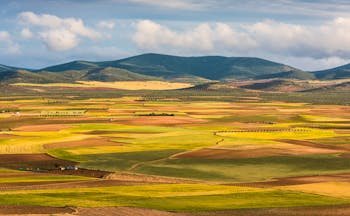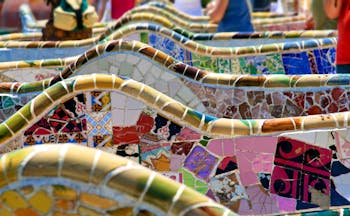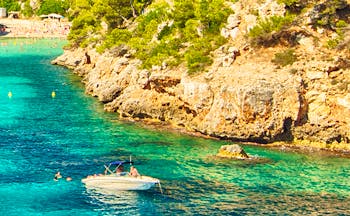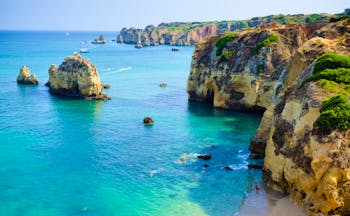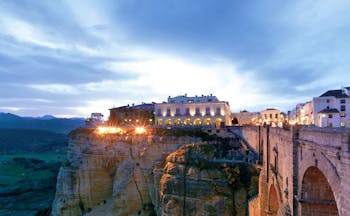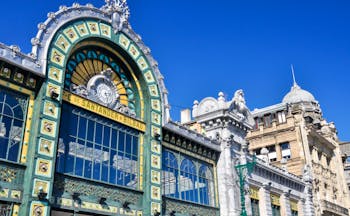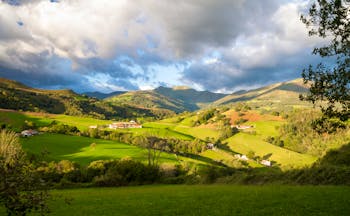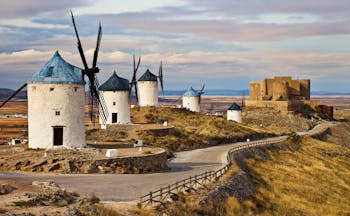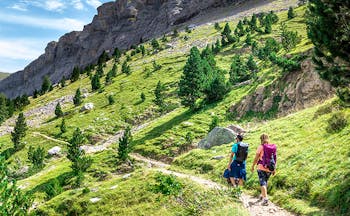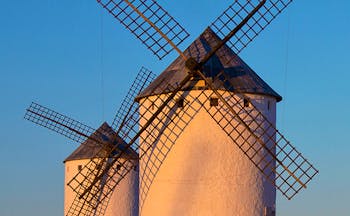Luxury bespoke hotel holidays to the Hospes Amerigo Alicante
Facts in brief
Official star rating 5
Location The hotel is located in Alicante’s old town, 2 minutes’ walk from the port.
Annual opening All year
Closest airport Alicante
Distance from airport 15km
Closest railway station Alicante Luceros
Distance from railway station 1.5km
Hotel facilities and services
Restaurant, tapas bar, rooftop terrace, bistro, library, seasonal outdoor pool, garage, gym, spa, sauna, solarium, laundry, parking facilities.
Out and about nearby
‘El Barrio’ Alicante’s Old Town, the beaches of El Postiguet, L’Albufereta, Cocó, San Juan and Urbanova, the island of Tabarca, Santa Barbara Castle, the districts of Santa Cruz and San Roque, seafront promenade and the port district, El Postiguet Beach, the Bullfighting Museum, Panteón de Quijano Gardens, the Museum of Fine Arts.
Sports nearby
Walking, cycling, golf, watersports, horse riding.
We had a wonderful holiday which exceeded our expectations. Great hotels with a good itinerary. We wouldn't hesitate to use your services again.Mrs J, June 2025
From about
Sample prices are per person based on two people sharing a Dreamer double room for 5 nights £1,380
Holiday Code EXH46314
The prices displayed here are a guide only. Each holiday price will be tailor-made at the time of booking to reflect all actual costs including up-to-date special offers.
Call us on 01392 441245
Luxury bespoke hotel holidays to the Hospes Amerigo Alicante
The five-star Hospes Amerigo is a luxurious hotel in ‘El Barrio’ – Alicante’s old town. It is within easy walking distance of shops, restaurants, the port and museums. The hotel occupies a Dominican convent which has been lovingly renovated whilst maintaining many of its original features and traditional Mediterranean interior, accentuated by contemporary flair. Guests staying at the Hospes Amerigo can step off the bustling streets into a serene and tranquil environment. The lobby and staircase are bright and airy, and this style continues in the guestrooms. High ceilings help to create a pleasant and light ambience with pristine walls and white linen offset by the warm tones of the wooden floors. Guests can choose from a variety of rooms of different sizes and families will feel at home in the two-bedroom options. Reward yourself after a busy day’s exploration with delicious dining at the Fondillón Restaurant where you will find traditional recipes with local produce and seafood. Those looking for a lighter meal might prefer the restaurant bar for signature tapas. The Sunday brunch with live jazz music at the Bistro is not to be missed. Balmy evenings can be spent on the rooftop terrace, enjoying a tempting cocktail whilst taking in the stunning views of the city lights and Santa Barbara Castle. For a final touch of indulgence, head to the Bodyna Spa. Located on the rooftop of the Hospes Amerigo, here you will find treatment cabins, a fitness room, sauna, relaxation area and solarium terrace. There are even panoramic views from the swimming pool, which can be covered in the colder months. Hotel Hospes Amerigo is a stylish and contemporary centre from which to base your exploration of Alicante, perfectly located for a luxury short break and only five minutes by car from Luceros train station.
Room descriptions
The Hospes Amerigo Alicante has 81 rooms, each with private bathroom, telephone, plasma television with DVD player, heating, air condition, safe, mini-bar, free Wi-Fi, toiletries, pillow menu, 24-hour room service.
We had a wonderful holiday which exceeded our expectations. Great hotels with a good itinerary. We wouldn't hesitate to use your services again.Mrs J, June 2025
From about
Sample prices are per person based on two people sharing a Dreamer double room for 5 nights £1,380
Holiday Code EXH46314
The prices displayed here are a guide only. Each holiday price will be tailor-made at the time of booking to reflect all actual costs including up-to-date special offers.
Call us on 01392 441245
Luxury bespoke hotel holidays to the Hospes Amerigo Alicante
The journey and how you get there
For a holiday to the Hospes Amerigo Alicante, our clients usually fly to Alicante airport. The hotel is suited for a short city break or can be included as part of a fly-drive or fly-rail touring holiday. We include flights from London and can arrange private transfers, depending on what you would like to do and what is most appropriate to your overall journey.
Additional information
Children: One child (up to 6 years old) can be accommodated free of charge in the parent’s room. Family rooms can be requested (1 Dreamer + 1 Dreamer). Connecting rooms can be offered with a discount on the children’s room (for children up to 18 years old). Triple rooms are available on request. A maximum of 3 people are allowed per room from the Superior room category.
We had a wonderful holiday which exceeded our expectations. Great hotels with a good itinerary. We wouldn't hesitate to use your services again.Mrs J, June 2025
From about
Sample prices are per person based on two people sharing a Dreamer double room for 5 nights £1,380
Holiday Code EXH46314
The prices displayed here are a guide only. Each holiday price will be tailor-made at the time of booking to reflect all actual costs including up-to-date special offers.
Call us on 01392 441245
Luxury bespoke hotel holidays to the Hospes Amerigo Alicante
About Valencia and Murcia
The regions of Valencia and Murcia offer the chance to explore the long stretch of Spain’s eastern coast and the contrasting landscapes found inland. Picturesque villages lie scattered along the shore between larger towns, many of which have been overlooked by mass market tourism and are still beautifully authentic. The inland reaches of these regions vary drastically from fertile groves of oranges, dates and even rice to arid deserts spotted with isolated white buildings and hilltop towns. Valencia is another semi-independent region with its own language, valenciano. The language is derived from Catalan and has many similarities but it’s unwise to comment on this to a local as they are fiercely proud of their unique identity. Alongside valenciano and Castilian Spanish there is also the legacy of the long Arab occupation. On a stunning beach of golden sand is the regional capital of Valencia, Spain’s third-largest city. Visitors to this region must be sure to try a real paella as the famous dish originated here. There are countless combinations of flavours and ingredients to be tried in the restaurants, but the most traditional option is rabbit and chicken in a vibrant saffron rice. Valencia has reinvented itself in recent years with futuristic architecture and a sophisticated port area which contrast with the historic buildings of the atmospheric old town. On the other hand, Murcia is a historic city which is particularly noted for its Baroque cathedral and tapas scene. Between these two locations you will find the bustling town of Denia, launching point for ferries to the Balearic Islands. A historic port founded by the Romans, Denia has a hilltop castle, ancient fishing neighbourhood and beautiful beaches. The regions of Valencia and Murcia are particularly known for their festivals and two of Spain’s most iconic fiestas are held here. The crazy tomato fight of La Tomatina is Bunol is probably not to everyone’s taste, however the spring celebration of Las Fallas is highly recommended – a month filled with fireworks, huge bonfires and giant puppets that are set on fire at the end of the festivities. Booking in advance for this unique festival is essential.
Highlights of Valencia and Murcia
The City of Arts and Sciences and the Fine Arts Museum in Valencia. Historic monuments within Valencia including a 15th century silk exchange and a Cathedral, home to a Holy Chalice which is said to be the Holy Grail. Wildlife in the wetlands of the Albufera Natural Park. The lively university city of Murcia with Moorish fortified walls, Baroque cathedral and wealth of tapas bars. The Castell de la Santa Bárbara and Museo Arqueológico Pronvicial, giving the best views over the city of Alicante. The historic port town of Denia with its beautiful beaches, hilltop castle, former fishing neighbourhood or Baix la mar and Moorish influenced distrcit of Les Roques. Walking in Montgó Natural Park. Swimming at the secluded Les Rotes beach and nearby Cova Tallada (reached by boat or on foot). The town of Morella is the northern reaches of Valencia with its medieval fortified town and 13th century aqueduct. The iconic Penon de Ifach rock in the heart of Calpe. The colourful port city of Cartagena with its Roman Theatre, Castillo de la Concepcion and beautiful seafront promenade.
Festivals in Valencia and Murcia
March: Las Fallas festival of fire (Valencia), La Magdalena festivities in Castellon de la Plana. April: Easter celebrations and religious processions, Night of the Drums (Mula), Moor and Christians re-enactment fiesta in Banyeres de Mariola, Spring celebrations in Murcia including the “Burial of the Sardine”. June: Bonfires of San Juan Midsummer’s Eve Festival (Alicante). July: Valencia July Fair. August: La Tomatina tomato throwing festival (Bunol), August Fair in Xativa, the Corda fire festival in Paterna, Sexenni festival in Morella (every 6 years). September: Bull and horse droving in Segorbe, Murcia Fair, Romans and Carthaginians re-enactment in Cartagena.
Gastronomy in Valencia and Murcia
Cuisine in eastern Spain takes inspiration from both central Spain and the Arab influences of its past whilst making use of local ingredients available including seafood, fresh vegetables and game. Valencia and Murcia host many restaurants specialising in shellfish and fish, with fish often cooked in a salt crust or ‘a la espalda’ (lightly fried and baked). Paella, the vibrant rice dish which is known the world over originated in Valencia. Typical dishes include unusual ‘sea and mountain' combinations which use both meat and seafood, ‘Pa amb tomàquet' (bread with tomato, oil and garlic), ‘Fideuá' (a variant of Paella with pasta), ‘Zarzuela' (a seafood stew), ‘Escudella’ (a stew containing vegetables, meat, rice and pasta) and ‘Crema Catalana' (a Catalan version of a Crème Brûlée).
Climate in Valencia and Murcia
Valencia and Murcia enjoy a typical Mediterranean climate, although higher areas are somewhat cooler. Late spring and early autumn are great times to visit coastal areas as the weather is warm with temperatures of around 20 degrees centigrade, although some rainfall can be expected. Mid-summer in the cities can be unbearably hot, but the coastline is cooled by sea breezes. Winter is generally mild with occasional rain and average temperatures of 10-15 degrees, making this a favoured destination for cultural exploration year-round.


